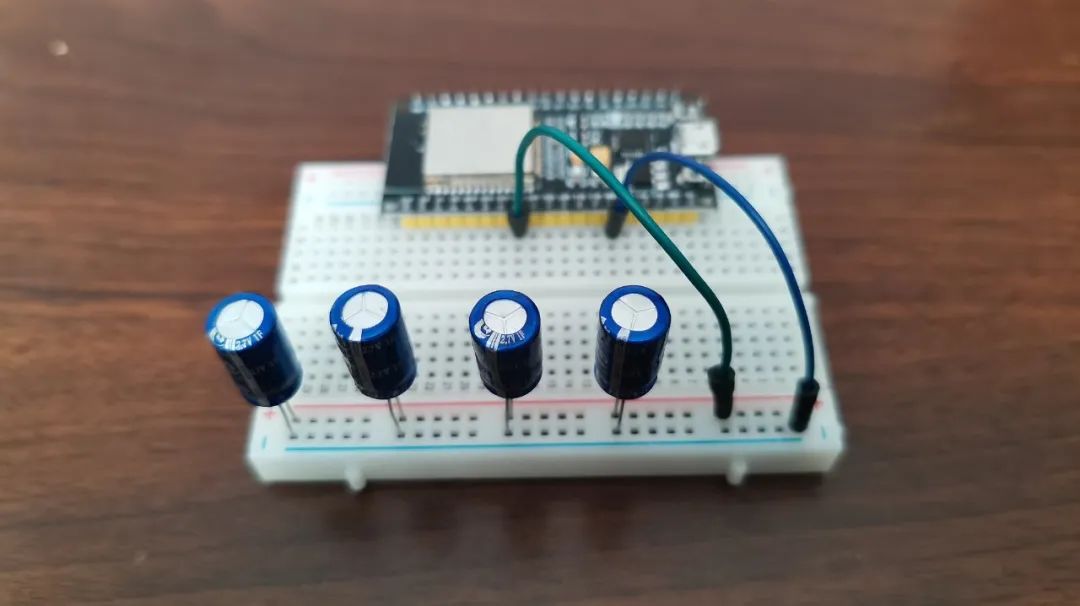
On the eve of the Lunar New Year, the microcontroller enthusiast explored the relationship between capacitor charge and voltage using the ESP32 and Phyphox, obtaining a graph of the relationship between capacitor charge and voltage, with satisfactory experimental results.
The source code for the capacitor charging and discharging experiment, previously created, was burned into the ESP32. Using this source code and a mobile phone, one can plot the voltage-time relationship of the capacitor charging and discharging process.
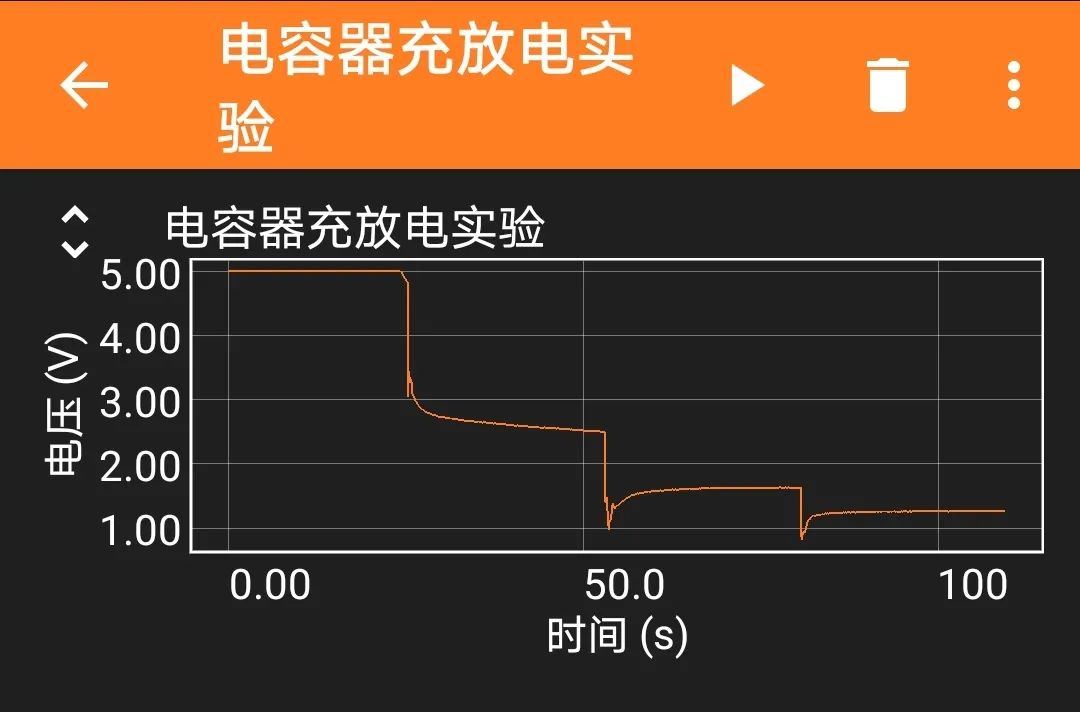
This experiment requires multiple identical capacitors, discharged beforehand; in this experiment, the enthusiast used four 1 farad capacitors.
During the experiment, a 5-volt power supply output from the ESP32 was used to charge one of the capacitors, raising its voltage to 5 volts.
The voltage across the capacitor was measured using IO33, and Phyphox was used to plot the voltage-time relationship across the capacitor.
Subsequently, the remaining capacitors were connected in parallel with the first capacitor. As the number of capacitors increased from 1 to 2, 3, and 4, the charge in the first capacitor changed to 1, 1/2, 1/3, and 1/4 of its original value.
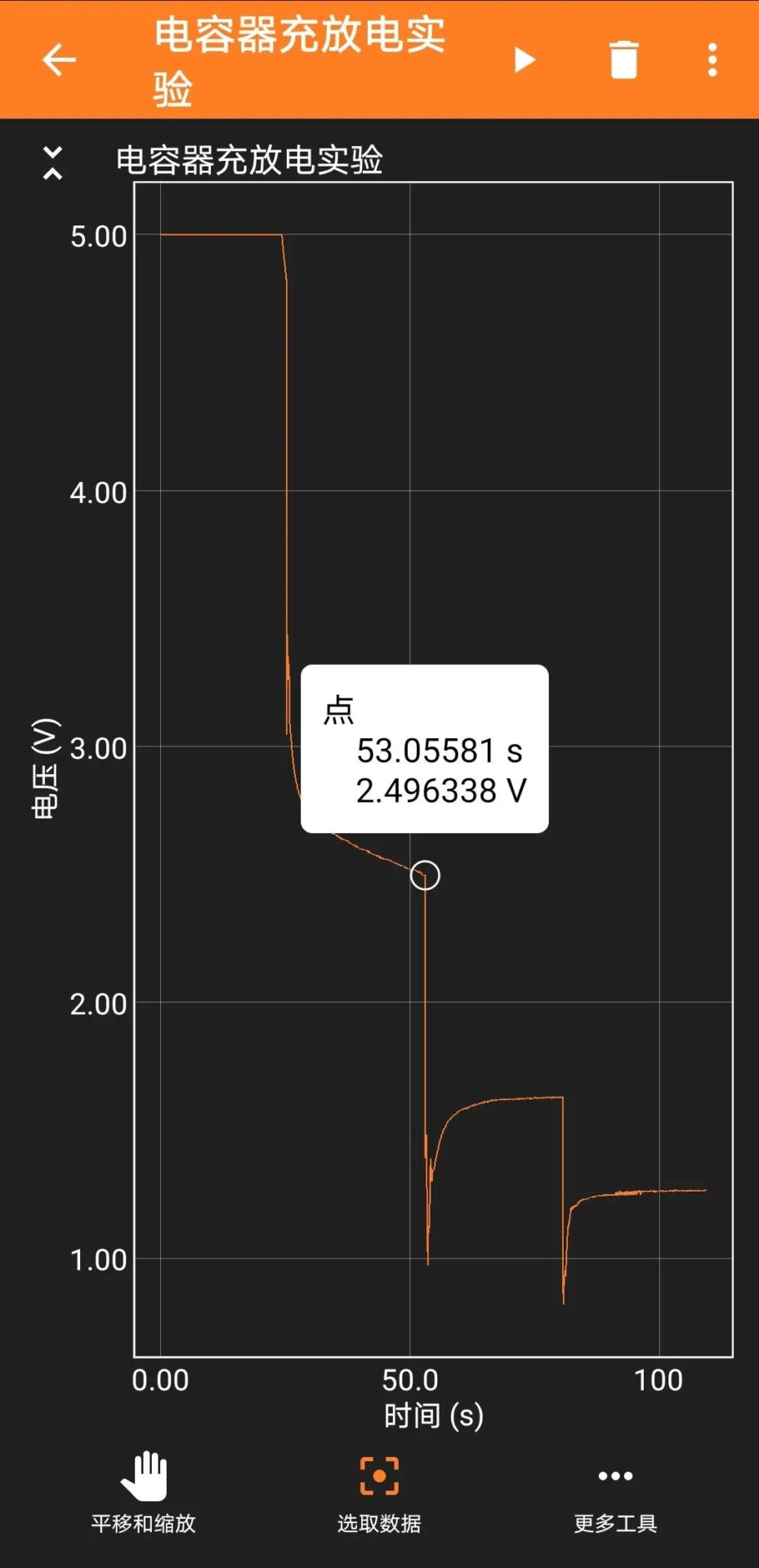
By expanding the capacitor voltage-time relationship graph to full screen and switching to the “Select Data” page, tapping the inflection points in the data graph yields the corresponding voltage values for 1, 2, 3, and 4 capacitors as 4.97V, 2.49V, 1.63V, and 1.27V.
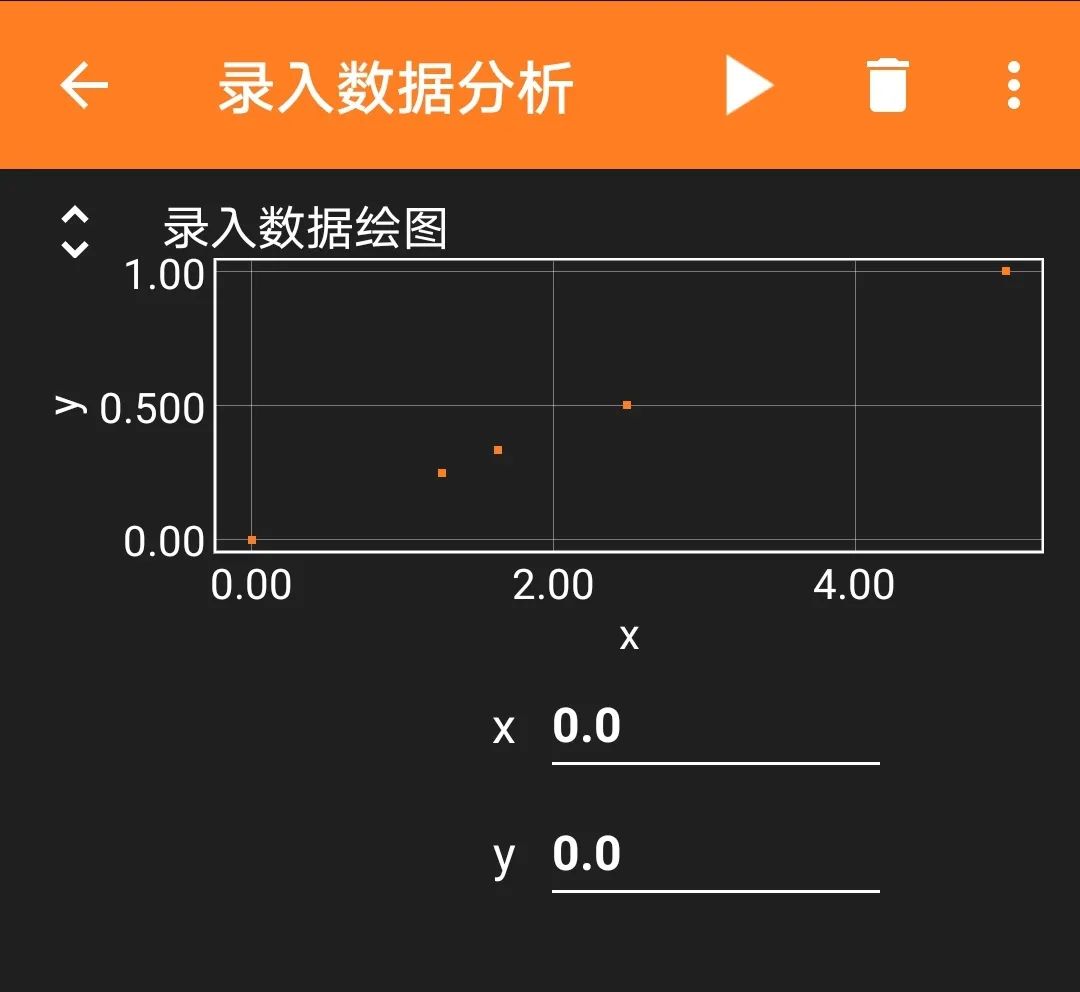
The capacitor charges of 1, 1/2, 1/3, 1/4 and their corresponding voltages of 4.97V, 2.49V, 1.63V, and 1.27V were entered into a homemade “Data Entry Analysis” experiment; observing the distribution of the plotted data points reveals that these points are roughly on a straight line inclined through the origin.
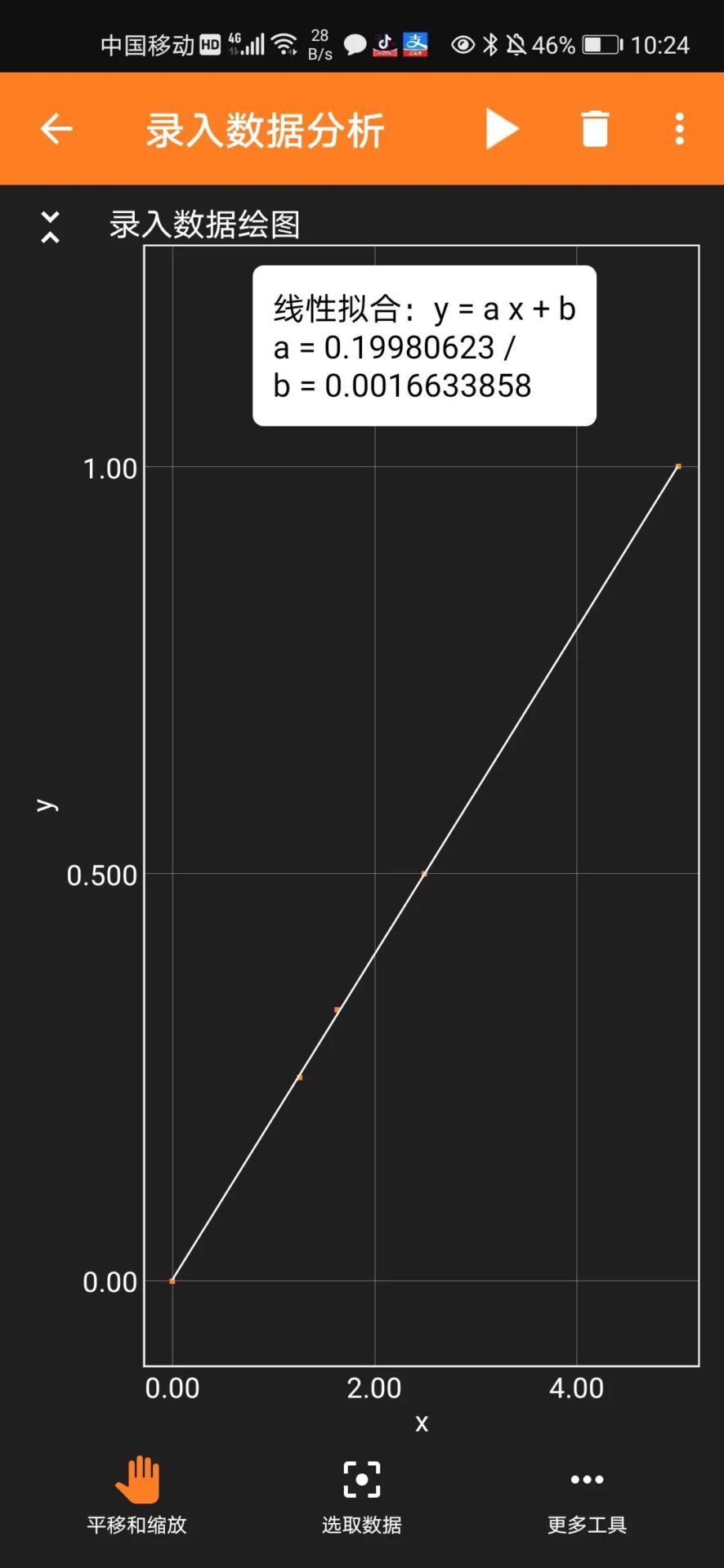
When the data relationship graph was expanded to full screen and linear fitting was selected, it was confirmed that these data points indeed lie on a straight line inclined through the origin.
The experiment was a complete success.
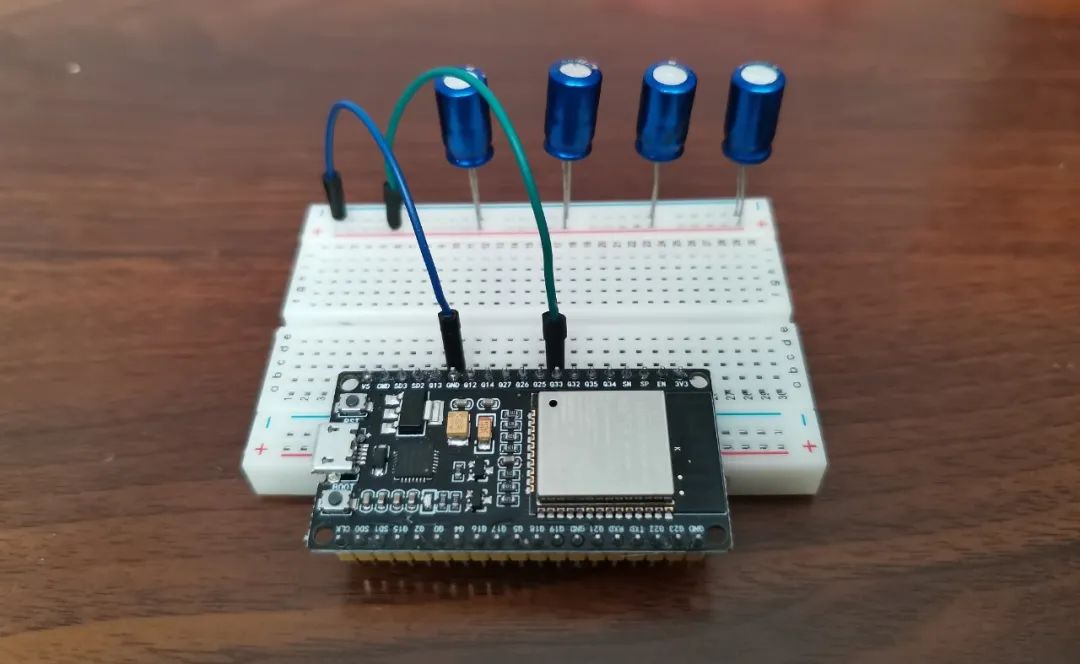

| Maker Jiaozuo |
HenanMaker Jiaozuo is the WeChat public platform of the Jiaozuo City Maker Education Master Studio, focusing on maker education, sharing maker cases, explaining innovative methods, inspiring creative design, conducting scientific exploration, organizing social surveys, guiding thesis writing, participating in maker competitions and patent applications, discovering, cultivating, and achieving students with innovative potential.
HenanPublic Number: chuangkejiaozuo
HenanMaster Blog: http://blog.sina.com.cn/updays

Long press to identify, follow, and share
– END –
